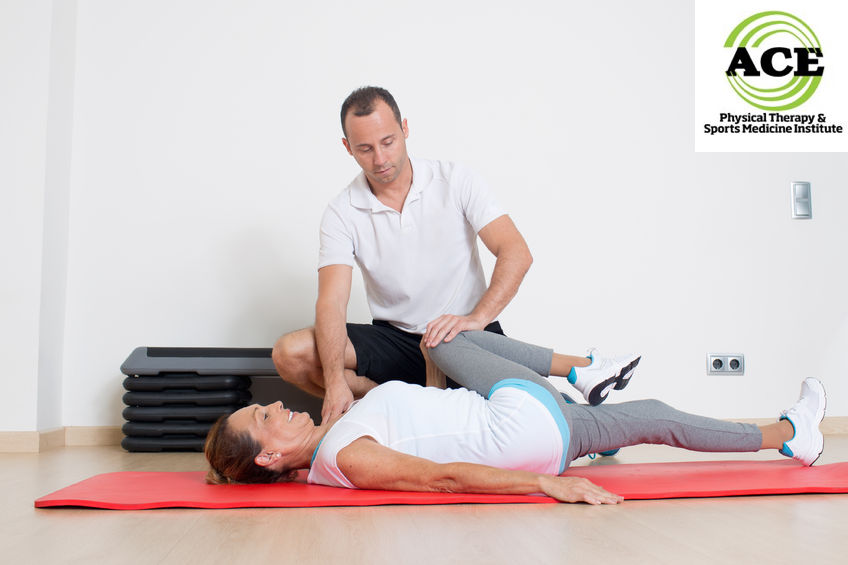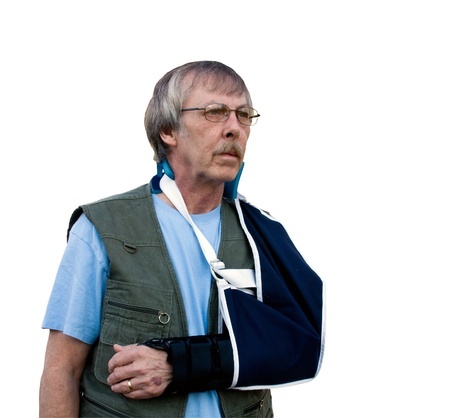IMMOBILITY AND PHYSICAL THERAPY
Immobility and Physical Therapy
by ACE Physical Therapy and Sports Medicine Institute
Tid Bits of Info.
- Arthritic joints might not gain motion due to a change in anatomical shape that reduces the distance between two bones.
- Joint capsules and ligaments are leather-like and will stretch and elongate but very slowly.
- Muscles control the motion of the joint and add a dynamic stability to it.
- Motion can be increased but the process might be painful and must be performed daily.
- Physical Therapists are the best-trained healthcare professionals to aid in the restoration of motion.
The human body is meant to move! We move joints throughout the body on a daily basis simply following our daily routines. Pain and stiffness can impede daily activities by limiting motion or causing us to move improperly. Both lack of movement and improper movement can eventually lead to a decrease in function. Physical Therapists are trained to teach and re-educate their patients how to regain their normal motion and relieve the symptoms that are present and causing limitations to their function.
Stiff joints are one of the most commonly treated conditions in orthopaedic physical therapy. While there are many causes for the limitation of movement, acute injury and arthritis are the two of the most common causes. Regardless of the cause, motion can usually be restored through treatment and regular exercise. Unfortunately, an arthritic joint can lose a considerable amount of motion and function that might not be able to be restored. Physical Therapist may recommend treatment is painful, but following the prescribed home exercise routine regularly will loosen and the joint will move more freely.
The synovial joint is the most common type of joint in the body. Synovial joints are full of synovial fluid that lubricates the joint structures as it moves. Static and dynamic forces provide stability for this joint. Static support comes from ligaments, leather-like structures that have no contractile properties. Dynamic support comes from the muscles that surround the joint. If the motion of the joint is limited for a period of time, it can cause the static and/or the dynamic structures to “shorten” and consequently limit motion. During examination, the Physical Therapist will evaluate the static and dynamic structures to help determine what is causing the limitation in motion then proper treatment can be implemented with a variety of exercises and manual techniques.
Manual Therapy
Mobilization and/or manipulation techniques are the most common types of manual therapy utilized in Physical Therapy. The differences between mobilization and manipulation are the speed and amplitude of the force applied. Mobilization techniques are applied at varying speeds and amplitude forces. Manipulation techniques are high speeds, low amplitude force in the form of a thrust applied to the joint within its anatomical limits. These techniques are specific passive movements of the soft tissue that enhance mobility and increase range of motion. Soft tissue is pliable, but many static stabilizing structures of a joint (e.g. ligaments and capsules) are similar to leather and must be stretched gradually to avoid damaging them.
Exercises
Stretching and strengthening exercises play a critical role in the rehabilitation of a stiff joint. The dynamic support and movement of the joint is dependent upon the muscles that surround that joint. If the muscles are not “used” in the normal range of motion limits, they will become less active and “weaker” in the unused range of motion. Physical therapists are the some of the best healthcare professionals to diagnose the weakness and treat it aggressively with several different types of exercises. They can manually assist the movement throughout the normal range of motion and movement pattern and add resistance accordingly. They might prescribe various exercises that utilize a host of resistance apparatus that will stimulate the muscle to develop strength throughout the desired range of motion and movement pattern.
Joint stiffness is a major problem for some people. The cause of the joint motion restriction must be determined and treated properly. In most cases the limitation to motion can be overcome with a thorough rehabilitation program that includes manual techniques and exercises designed to stretch and strengthen the static and dynamic soft tissues of the involved joint.
Read more articles on our main website blog at: ACE-pt.org/blog
Vist our main website at www.ACE-pt.org


